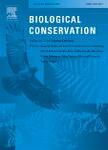版权所有:内蒙古大学图书馆 技术提供:维普资讯• 智图
内蒙古自治区呼和浩特市赛罕区大学西街235号 邮编: 010021

作者机构:Univ Hamburg Res Unit Sustainabil & Global Change D-20146 Hamburg Germany Max Planck Inst Meteorol Int Max Planck Res Sch Earth Syst Modelling D-20146 Hamburg Germany Int Inst Appl Syst Anal A-2361 Laxenburg Austria
出 版 物:《BIOLOGICAL CONSERVATION》 (生物保护)
年 卷 期:2010年第143卷第7期
页 面:1812-1821页
核心收录:
学科分类:0710[理学-生物学] 0830[工学-环境科学与工程(可授工学、理学、农学学位)] 07[理学] 09[农学] 0713[理学-生态学]
基 金:Michael Otto Foundation for Environmental Protection European Commission
主 题:Systematic conservation planning Set-covering problem Representation Persistence Mixed integer programming European environmental policies
摘 要:Selection and establishment of reserves was often done unplanned and uncoordinated between regions. Systematic conservation planning provides tools to identify optimally located priority areas for conservation. Planning for multiple species promises adequate provision for the needs of a range of threatened species simultaneously. Several studies apply the set-covering problem by minimizing resources for given conservation targets of multiple species. We extend this method by also considering different degrees of coordination in multiple-species conservation planning and representing reserve sizes endogenously. A deterministic, spatially explicit programming model solved with mixed integer programming is used to represent minimum habitat area thresholds for all included biodiversity features. The empirical model application to European wetland species addresses five different scenarios of coordination in conservation planning, including taxonomic, political, and biogeographical coordination of planning. Our approach illustrates and quantifies the efficiency of multi-species conservation activities. We show that maximum coordination in conservation planning enhances area efficiency by 30% compared to no coordination. Furthermore, strong coordination in conservation planning does not only reduce the area requirement, but synergy effects even enable the conservation features to achieve higher conservation objectives. Spatial subdivision of planning, however, leads to highest area requirements and less conservation target achievement. (C) 2010 Elsevier Ltd. All rights reserved.